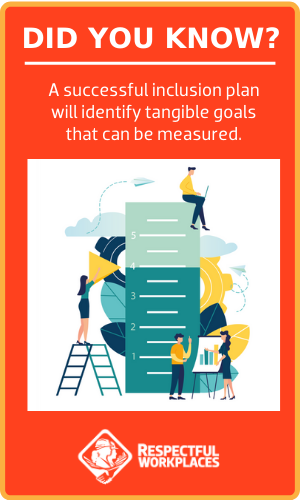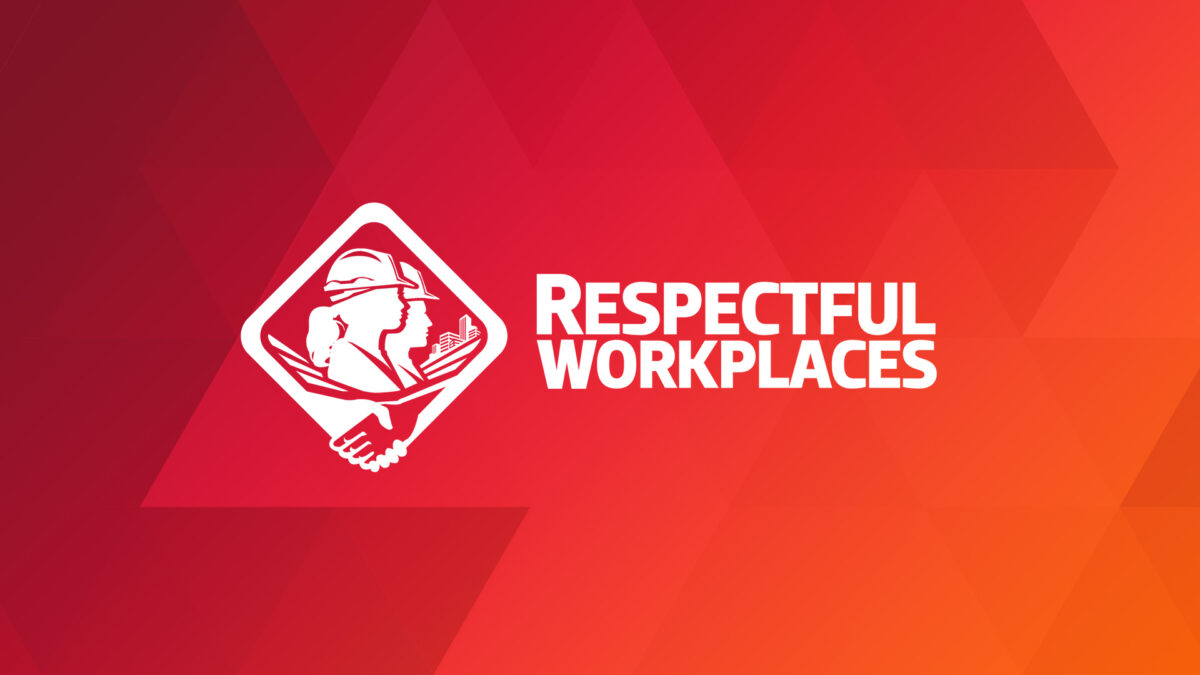Does your organization identify how inclusion will contribute to its well-being and profitability?

To create workplaces that are inclusive of Black, Indigenous, and People of Colour requires more than good intentions: they require tangible goals that can be measured. The goals identify how these efforts will contribute to the well-being and profitability of the organization. This ensures that the initiative remains a priority.
Without the ability to measure progress, even great ambitions cannot be realized. In a study of more than 600 people in 35 countries, researchers found that 70% of respondents said that creating an inclusive workplace is a strategic priority of their organization; however, only 43% of respondents said they are on track to achieve their goals.
A leading reason why many organizations fail to achieve their inclusion goals is that few are measuring their progress. In a study of Canadian employers, 79.6% said that inclusion, equity, and human rights are considered a strategic priority within their organizations. However, only 18.8% reported that they measure the impact, efficacy, or return on investment of their inclusion initiatives.
Researchers caution that effective measurement requires more than filling a certain number of positions with Black, Indigenous, and People of Colour. Measurements must always relate back to the strategies and key objectives of an organization.
The business case, or business plan, for inclusion answers why you should pursue a specific goal and establishes how to measure whether you have succeeded or not. To create an organization that is inclusive, tangible goals should be focused on the specific challenges of an organization, and be able to show the reversal of a trend that is of concern.
These are some of the areas related to inclusive workplaces that can affect profitability and can be measured:
- Turnover rates. Turnover rates that are higher than average among Black, Indigenous, and People of Colour workers are an indication that these workers are experiencing specific obstacles to retention and advancement. (Readers may wish to review blog #48 to read more about these obstacles). Turnover represents a loss of talent, that can also be measured as a financial cost.
- According to the Society for Human Resource Management, the average cost per hire is US$4,129. In addition, Training Magazine found that it costs about US$986 to train a new hire. This means that the cost of turnover per person is about US$5,000.
- Worker engagement and feelings of belonging. Research has shown that worker engagement and feelings of belonging are higher in workplaces that are inclusive. The 2018 Deloitte Millennial Survey found that Millennial (those born between January 1983 and December 1994) and Gen Z (those born between January 1995 and December 1999) workers who perceive their organizations and senior management as diverse and inclusive also see their working environments as motivating and stimulating.
- According to Gallup, highly engaged workplaces had 41% lower absenteeism and a 17% increase in productivity.
The business case for creating an organization that is inclusive of Black, Indigenous, and People of Colour will identify how inclusion will contribute to its well-being and profitability.
Here is a list of questions that will help organizations identify potential areas of challenge.
1. Recruitment
- Are we accessing a broad employment pool?
- Does our brand attract Black, Indigenous, and People of Colour?
2. Retention and advancement
- Do we inclusively engage Black, Indigenous, and People of Colour in our organization?
- Do they feel good about the organization?
- Are we retaining high-potential Black, Indigenous, and People of Colour?
- Does our day-to-day environment actively promote inclusion and success for Black, Indigenous, and People of Colour workers?
- Does our culture promote teamwork and innovation?
3. Marketplace engagement
- Do Black, Indigenous, and People of Colour communities view our organization as inclusive?
- Are we attracting and retaining a Black, Indigenous, and People of Colour workforce that will drive insights that effectively build relationships with Black, Indigenous, and People of Colour communities?
- Do we use insights from our Black, Indigenous, and People of Colour workers to deepen and broaden our community relationships?
Measuring progress toward a more inclusive organization may require new approaches to gathering information and understanding the connection between inclusion and the well-being and profitability of an organization. However, the effort is well worth it. Research shows that when organizations commit to inclusion, they financially outperform competitors and increase engagement, productivity, and innovation.
—
The BuildForce Respectful Workplace Online Toolkit provides three tools based on the proven practices of respectful and inclusive organizations to help address systemic racism: the Online Self-Assessment Tool, a Policy Framework and Implementation Guide, and the online course, “Working in a Respectful and Inclusive Workplace.”
The management Self-Assessment Tool provides a blueprint of the actions required to identify and re-work systems where unconscious bias may be impacting management goals to be fair and inclusive in their recruitment, promotion, and retention practices.
Also look for the new BuildForce online course, to be released in the fall of 2021, to help leaders and managers to understand systemic racism. BuildForce is also developing a new module for the “Working in a Respectful and Inclusive Workplace” course to help workers develop awareness about systemic racism, also to be released in 2021.
For more info:
- Canadian Centre for Diversity & Inclusion. “What Gets Measured Gets Done: Measuring the Return on Investment of Diversity and Inclusion.” Report, 2013.
- Deloitte. “Deloitte Millennial Survey.” 2018. See www2.deloitte.com/content/dam/Deloitte/global/Documents/About-Deloitte/gx-2018-millennial-survey-report.pdf.
- Donovan, Mason and Mark Kaplan. “The Inclusion Dividend, 2nd Ed.” DG Press, New Hampshire, U.S., 2019.
- Gallup. “The Right Culture: Not Just About Employee Satisfaction.” April, 2017. See www.gallup.com/workplace/236366/right-culture-not-employee-satisfaction.aspx.
- McKinsey. “Why Diversity Matters.” January 2015. See www.mckinsey.com/business-functions/organization/our-insights/why-diversity-matters.
- Newsweek Vantage. “Achieving Results: Diversity & Inclusion Actions with Impact.” 2017. See www.newsweek.com/diversity-inclusion-actions-impact-download-workplace-articles-study-689453.
- Society for Human Resource Management. “Average Cost-per-Hire for Companies is $4,129, SHRM Survey Finds.” August, 2016. See www.shrm.org/about-shrm/press-room/press-releases/pages/human-capital-benchmarking-report.aspx.
- Trainingmag.com. “2018 Training Industry Report.” See https://trainingmag.com/2018-training-industry-report.
Read from the beginning. Click here to start at Part 1.
What can an effective Respectful and Inclusive Workplace Program deliver?
- Become an employer of choice – attract, retain, and advance top talent from all sources of labour
- Unlock collaboration and innovation – create high-performing teams through diversity of thought and experience
- Build your brand – your organization will gain a competitive edge as a leader and innovator
Get started today!
The BuildForce Canada Online Respectful and Inclusive Workplace Toolkit includes:
- the Respectful Workplace Online Self-Assessment Tool to assist organization leadership in assessing their current situation and identifying where they may need to make changes
- the Respectful Workplace Policy Framework and Implementation Guide to assist organizations in creating and implementing a policy that supports a respectful and inclusive workplace
- the Respectful Workplace Online Training Course to train workers on how to create and support a respectful and inclusive workplace
- the online course Introduction to Understanding Systemic Racism: A Guide for Leaders and Managers
All the resources you need to create and support a respectful and inclusive workplace!

Respectful and Inclusive Workplaces
